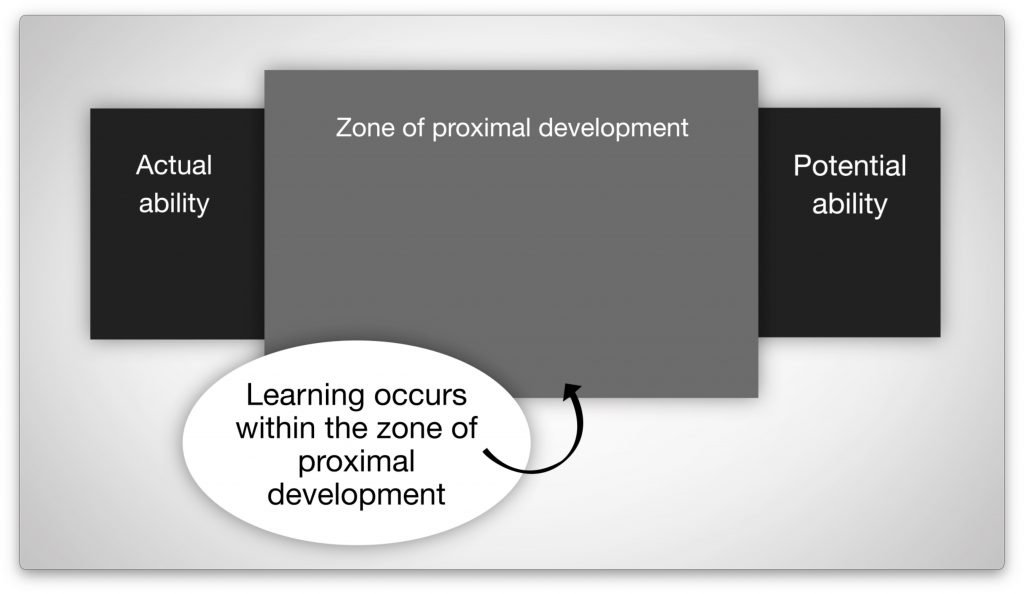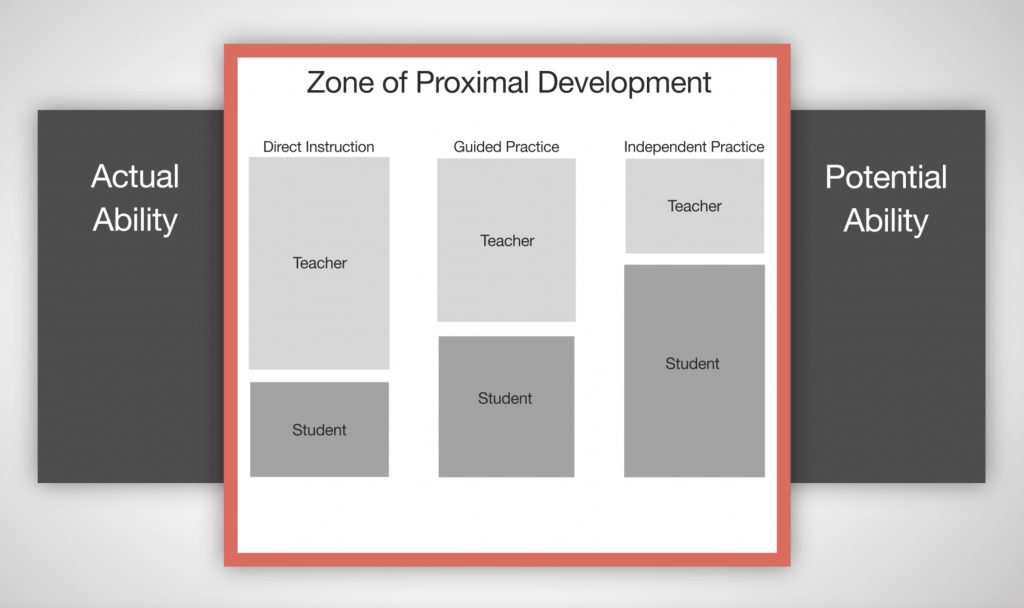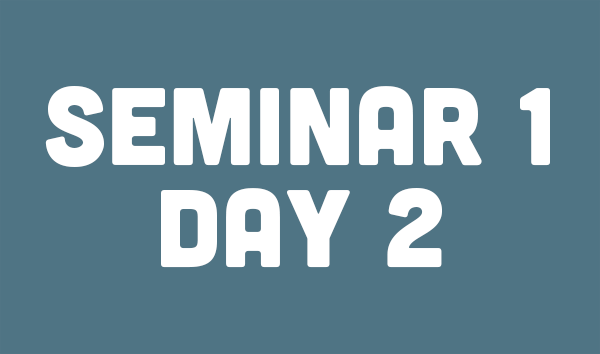For Teachers
Enroll as a learner today
Challenge yourself to grow as a professional. Add this module to your cart at no cost to you because we believe in your professional development.
Add to cartThe Challenge
Educational theory throughout history informs us about how to be more effective teachers. What we have learned through the Ancient and Middle Ages has brought us to more effective ways to teach in this Modern Age. Today, teachers are more informed on how a child thinks and learns. How can educators learn from the past and ultimately, view their role as a guide to students from their actual abilities to reach their potential abilities?
Zone of Proximal Development
An actual ability is a child’s current ability level. A potential ability is an ability that may or may not become developed. Between the actual ability and potential ability is the zone of proximal development, as researched by Lev Vygotsky. Learning occurs within the zone of proximal development. In a classroom, the teacher is the guide who is the “more knowledgeable other” that evaluates the actual ability of each student and sees the potential ability in every student.

Gradual Release of Responsibility
The gradual release of responsibility suggests that children need to learn a skill independently and that the role of the teacher within this method is to provide guidance to a student. This method of instruction moves from direct instruction to guided practice to independent practice. Through these steps, the teacher gradually releases responsibility of the outcome to the student within the zone of proximal development.

Direct Instruction
The first step of the gradual release of responsibility is direct instruction in which the teacher presents the information in the lesson. An effective teacher thinks aloud and demonstrates the presentation of the information while the students listen and respond. Four techniques to apply during direct instruction to encourage students to listen and respond which are:
- It’s your turn
- Wait for responses
- Turn and talk
- Think-Pair-Share
Benefits
As it was believed to be true, it is no longer acceptable for anyone to suggest that students gain knowledge simply by memorizing information in fear of receiving harsh punishment. This archaic view of how to teach can become a thing of the past as educators around the globe learn about methods and techniques to improve their direct instruction. This first step of the gradual release of responsibility, if effective, increases the potential for every student to achieve.
Investing in Teachers
Teaching Training Together has trained thousands of educators to recognize that the role of the teacher is to guide a student from an actual ability to a potential ability. Your support helps us provide more training to more educators who will apply effective methods and techniques to their classroom instruction.
Beth is the President of Teaching Training Together, an organization based in Burlington, Massachusetts, that provides initial training through professional development seminars to underserved school leaders and teachers.
